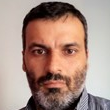Topic Editors


Application of Smart Technologies in Water Resources Management
Topic Information
Dear Colleagues,
The technological advancements of the last century facilitated the development of efficient, low-cost sensors and automatic measurement platforms that allow water resource monitoring in high spatial and temporal scales. Telecommunication technologies and the development of Internet of Things infrastructure provided the opportunity for near-real-time monitoring of water quantity and quality with early warning and adaptive management capabilities. Measurements of key parameters such as water level, discharge and physicochemical properties are nowadays captured with a variety of smart, low-cost sensors, radar systems, remotely operated aerial or floating vehicles and satellites. This state-of-the-art monitoring infrastructure is expected to provide significant amounts of valuable data in the coming years, supporting policy makers and managers to preserve, manage and restore water resources efficiently. Therefore, the aim of this Special Issue is to present the latest technological applications and methods for water resource monitoring and management that provide near-real-time information and/or high-spatial and temporal resolution data that can optimize the current management practices and minimize potential impacts from water-related disasters.
Dr. Elias Dimitriou
Dr. Joaquim Sousa
Topic Editors
Keywords
- water vulnerability
- pollution risk
- water resources management
- pollution pressures
- water quality
- climate and land use change
- water bodies restoration
Participating Journals
| Journal Name | Impact Factor | CiteScore | Launched Year | First Decision (median) | APC | |
|---|---|---|---|---|---|---|

Energies
|
3.2 | 5.5 | 2008 | 16.1 Days | CHF 2600 | Submit |

Hydrology
|
3.2 | 4.1 | 2014 | 17.8 Days | CHF 1800 | Submit |

Journal of Marine Science and Engineering
|
2.9 | 3.7 | 2013 | 15.4 Days | CHF 2600 | Submit |

Remote Sensing
|
5.0 | 7.9 | 2009 | 23 Days | CHF 2700 | Submit |

Water
|
3.4 | 5.5 | 2009 | 16.5 Days | CHF 2600 | Submit |

MDPI Topics is cooperating with Preprints.org and has built a direct connection between MDPI journals and Preprints.org. Authors are encouraged to enjoy the benefits by posting a preprint at Preprints.org prior to publication:
- Immediately share your ideas ahead of publication and establish your research priority;
- Protect your idea from being stolen with this time-stamped preprint article;
- Enhance the exposure and impact of your research;
- Receive feedback from your peers in advance;
- Have it indexed in Web of Science (Preprint Citation Index), Google Scholar, Crossref, SHARE, PrePubMed, Scilit and Europe PMC.

